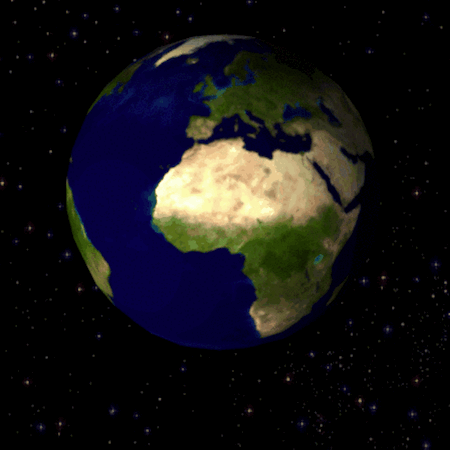The Graphics Interchange Format is having a moment, but there’s a chequered history to the humble GIF, or should that be “jif”? The internet is built for speed — it just rarely seems like it. As the infrastructure for data transmission improves, the consumer demand for sensory content rises. From text to typography, photography to animation, each increase in graphic detail leads to greater demands on the processing power required to decode it — unless it loops.
CompuServe first introduced the Graphics Interchange Format in 1987. The GIF, as it is better known, supported looping animations of up to 256 colors. The limitations of the dial-up modem speeds at the time meant that digital images that came close to reproducing analogue color photography would take several minutes to load. The native ability of the GIF to loop meant that web authors used it for the opposite aesthetic — to make flickering, saturated graphics that caught the eye without asking it to stay focused there.
The animated GIF is the internet format par excellence — compatible, compact, and anonymous. Today, our experience of browsing online is still dominated by two forms of movement — scrolling and static. Confined by the borders of the screen, we replace the lateral turning of the head with the pointer-assisted panning of the canvas that lies beyond. As a moving object embedded within a static page, the GIF catches our attention, only to let it go again as we scroll further down.
Much like the Polaroid photography of the decade before, GIFs are both gratifying and disposable. Yet the transience of both formats has paradoxically lead to their widespread fetishisation. While the act of taking a Polaroid brings the darkroom to the photographer, the range of accessible freeware applications for producing GIFs brings visual creativity back to the level of Microsoft Paint.
When beginning to use graphics software, every novice starts with the paintbrush or the pen. Although they know it is possible to make a masterpiece by fixing each and every point, soon enough they discover the joy of the paint bucket and gradient fill. Just like these tools, the animated GIF is a shortcut to the senses. It is a functional minimalism, emerging out of impatience — why wait for sixteen-million colours when sixteen are enough?
The Futurists thought the modern age would be dominated by velocity, where you could race around the world in streamlined vehicles of industrial power. They were right about speed, but wrong about direction. Today we wait for things to come to us.
lawrencelek.com
Lawrence Lek
Lawrence Lek is a speculative sculptor who makes objects, environments, and networks that reconnect the individual and collective body. Drawing from a fascination with primal archetypes, he combines audio, video, programming, sculpture and architecture into habitats for a brave new world. He also runs Assembly, a nomadic platform for collective works of art. @prosthetic“Jif”
Gif inventor Steve Wilhite used the presentation of his Webby Lifetime Achievement Award last Spring to get something off his chest — namely, that the hard “g” we have all been using to pronounce the acronym of his creation is wrong. The correct delivery is “jif”. Wilhite took particular umbrage with the Oxford English Dictionary’s prescription that it could be pronounced both ways, to which the publication retorted that the matter was beyond the retired software engineer’s control.
March 20, 2014 2 minutes read
Future Loop
The Graphics Interchange Format is having a moment, but there’s a chequered history to the humble GIF, or should that be “jif”?

